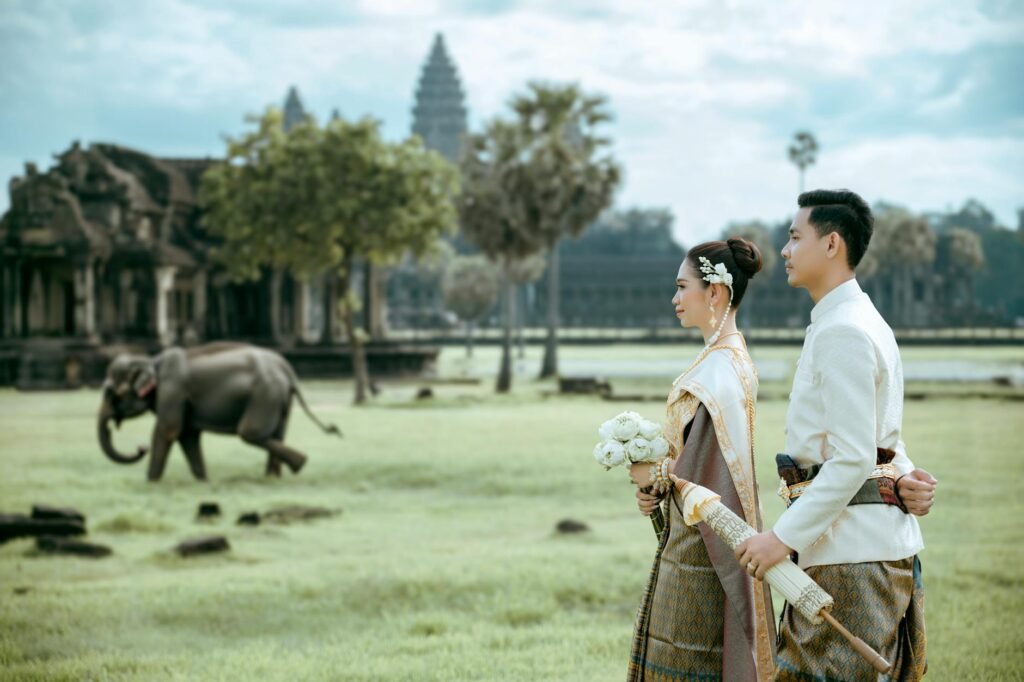Koh Ker, a sprawling temple complex and former capital city in present-day Cambodia, beckons travelers with its enigmatic history and impressive architecture. Lost for centuries in the jungle, its rediscovery has unveiled a remarkable site offering a glimpse into the Khmer Empire’s fascinating past.
The Rise and Fall of Koh Ker
Unlike the better-known Angkor Wat, Koh Ker served as the Khmer capital for a relatively short period, from the early 10th century to the mid-10th century. Its construction was ordered by King Jayavarman IV, who shifted the empire’s center of power from Angkor. The reasons behind this move remain debated by historians, with theories ranging from political maneuvering to astrological beliefs.  The city’s eventual decline and abandonment are equally shrouded in mystery, possibly linked to internal strife and conflicts.
The city’s eventual decline and abandonment are equally shrouded in mystery, possibly linked to internal strife and conflicts.
The Prasat Thom: Koh Ker’s Iconic Pyramid
The centerpiece of Koh Ker is undoubtedly the Prasat Thom, a seven-tiered pyramid temple that dominates the landscape. This imposing structure, a unique departure from the more conventional temple architecture found at Angkor, is a testament to the ambition and artistic vision of its creators. Climbing to the top offers breathtaking panoramic views of the surrounding jungle.  Its unique design, different from other Khmer structures, is a subject of continued study and fascination for archaeologists and art historians alike.
Its unique design, different from other Khmer structures, is a subject of continued study and fascination for archaeologists and art historians alike.
Beyond the Pyramid: Exploring Koh Ker’s Remnants
While the Prasat Thom is the undeniable star of Koh Ker, the site encompasses a much larger area dotted with numerous smaller temples, reservoirs, and other structures. Exploring these remnants reveals a more complete picture of the city’s complexity and scale. You can easily spend an entire day wandering through this fascinating historical site. You can find out more about the surrounding area through this travel guide and plan your trip accordingly. [IMAGE_3_HERE]
A Journey Through Time: The Significance of Koh Ker
Koh Ker’s significance extends beyond its architectural marvels. It offers a unique window into a pivotal period in Khmer history, revealing a departure from established traditions and the evolution of artistic styles. The religious beliefs reflected in its structures provide insights into the spiritual life of the Khmer people during this era. To get the most out of your visit, consider hiring a local guide. You can find more information about local guides on this website.
The Mysteries That Remain
Despite extensive research, many questions about Koh Ker remain unanswered. The exact reasons behind its rise and fall, the full extent of its population, and the details of its daily life continue to fuel scholarly debate and inspire further exploration. Further research is needed to fully understand this significant historical site. Consider visiting during the cooler months for optimal exploring. Check out weather updates on this reliable site before you go. [IMAGE_4_HERE]
Conclusion
Koh Ker offers a captivating journey into Cambodia’s rich past, presenting a unique blend of history, architecture, and mystery. Its remote location, its majestic Prasat Thom, and the numerous unanswered questions surrounding it all contribute to its allure. A visit to Koh Ker is a must for anyone interested in exploring the lesser-known gems of the Khmer Empire.
Frequently Asked Questions
What is the best time to visit Koh Ker? The best time to visit Koh Ker is during the dry season (November to April) when the weather is pleasant and the jungle is less dense.
How do I get to Koh Ker? Koh Ker is located quite far from other well-known destinations. The most common way to get there is by hiring a taxi or private driver from Siem Reap.
Are there accommodations near Koh Ker? There are limited accommodation options directly in Koh Ker. Most visitors arrange accommodation in Siem Reap or other nearby towns.
What should I bring to Koh Ker? Bring comfortable walking shoes, insect repellent, sunscreen, hats, water, and a camera.
Can I climb the Prasat Thom? Yes, you can climb the Prasat Thom, although the steps can be steep and challenging.